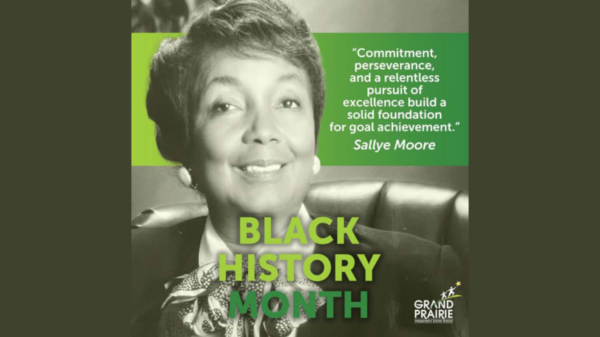By Norma Adams-Wade

Credit Wikipedia
We all love Vice-President Kamala Harris. Yet we admit her recent words set off an international firestorm.
On her diplomatic visit to Guatemala in June, the United States’ second most powerful person was roundly quoted in media as saying to potential immigrants, “Do not come. Do not come.”
Her admonition addressed the controversial and yet unsolved issue of undocumented migrants crossing the nation’s southern border and entering Texas, largely from Mexico, Guatemala, and other Latin American sites. Her message was: stay where you are and allow America to help solve the “root causes” that compel you to leave, including corruption and poverty. Some politicians and media pundits criticized Harris’ words, particularly migrant advocate U. S. Rep. Alexandria Ocasio-Cortez (D-NY) who said “This is disappointing…”
Aside from criticism, though, Harris’ statement also delves up much ignored or maybe even willfully concealed history about the Statue of Liberty and the mood of Black and White America at the time that the statue was dedicated 135 years ago in 1886. We are familiar with the welcoming inscription:
“Give me your tired, your poor,
Your huddled masses yearning to breathe free, …”

Credit: Wikipedia
We are not so familiar with how Black Americans reacted to those much-hyped words during those hateful post-Reconstruction years filled with lynchings and Jim Crow discrimination.
I was just thinking…when VP Harris said “Do not come,” did her words blow out the Statue’s floodlight torch?
And to how many “huddled masses” can America issue “world-wide welcome”? Logically speaking, is there an endless open-door policy? Apparently, there is a limit. So, VP Harris’ “Do not come” words seem to state the obvious: that the U. S. — for the time being — has reached its welcome limit.
Another little-known fact about the Statue that begs discussion is the shackles and chains almost hidden on Lady Liberty’s ankles — a nod to former President Abraham Lincoln’s success in legally ending the institution of slavery in America some two decades earlier.
The Statue, of course, was a gift from France, inspired by French abolitionist Edouard de Laboulaye and designed by his friends, French sculptor Frederic Bartholdi.
The statue was dedicated in 1886 during the era of the 100th anniversary of American Independence. The giant structure represents a welcoming, open-door invitation to folk fleeing oppression from other lands.
Particularly not a hot topic is that the French abolitionist admired Lincoln’s anti-slavery efforts and hoped that America’s example would influence France in its struggles against political repression.
The original design also showed broken chains on Lady Liberty’s wrist, but some American politicians argued against such a visibly clear symbol and the wrist chains were replaced by the current tablet in her hand.
Dallas historian and educator Clarence Glover Jr., aka “Professor Freedom”, extensively has researched the Statue’s shackles and lectures about their history and significance.
Glover says Black and European Americans today can glean dual lessons from the symbolism of the broken chains.
“It is a physical freedom for us (African-Americans) being freed from shackles,” Glover said. “It is a psychological freedom for White America to recognize our freedom.”
Of interest too is that during the time of the statue’s dedication, some Black newspapers and Black leaders spoke against the hype, saying the welcoming tone belied the true daily racism and discrimination that African descendants experienced daily in America.
Also, they knew no such welcome when they arrived here in chains and indeed symbolically lived in chains through the Jim Crow years.
Jewish poem and author Emma Lazarus in 1883 wrote the classically-memorable words affixed originally on a wall inside the pedestal of our nation’s symbol of freedom in New York Harbor. Currently, the poem is in the new Statue of Liberty Museum that opened on Liberty Island, near Ellis Island, in 2019. The poem has switched locations. Have the words lost their meaning?
These words seem strangely out-of-place in our nation’s current anti-immigrant climate. Here is Lazarus’ entire poem entitled “The New Colossus” that is now the Statue of Liberty inscription: Not like the brazen giant of Greek fame, With conquering limbs astride from land to land; Here at our sea-washed, sunset gates shall stand A mighty woman with a torch, whose fame Is the imprisoned lightning, and her name Mother of Exiles. From her beacon-hand Glows world-wide welcome; her mild eyes command The air-bridged harbor that twin cities frame. “Keep, ancient lands, your storied pomp!” cries she With silent lips. “Give me your tired, your poor, Your huddled masses yearning to breathe free, The wretched refuse of your teeming shore. Send these, the homeless, tempest-tost [sic] to me, I lift my lamp beside the golden door.”
Norma Adams-Wade, is a proud Dallas native, University of Texas at Austin journalism graduate and retired Dallas Morning News senior staff writer. She is a founder of the National Association of Black Journalists and was its first southwest regional director. She became The News’ first Black full-time reporter in 1974. norma_adams_wade@yahoo.com.










You must be logged in to post a comment Login